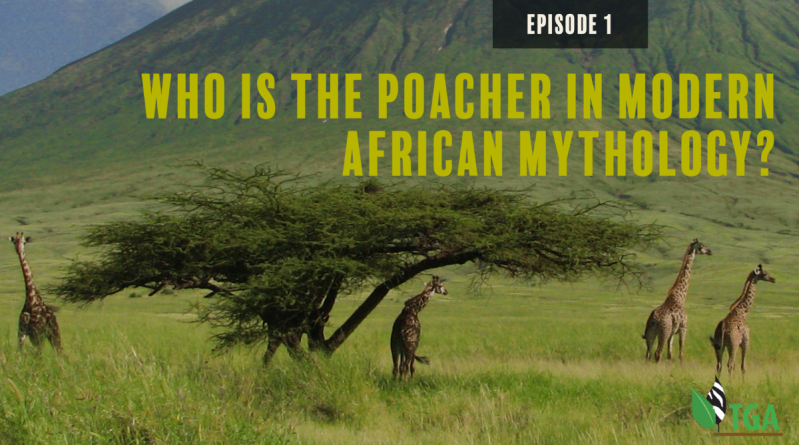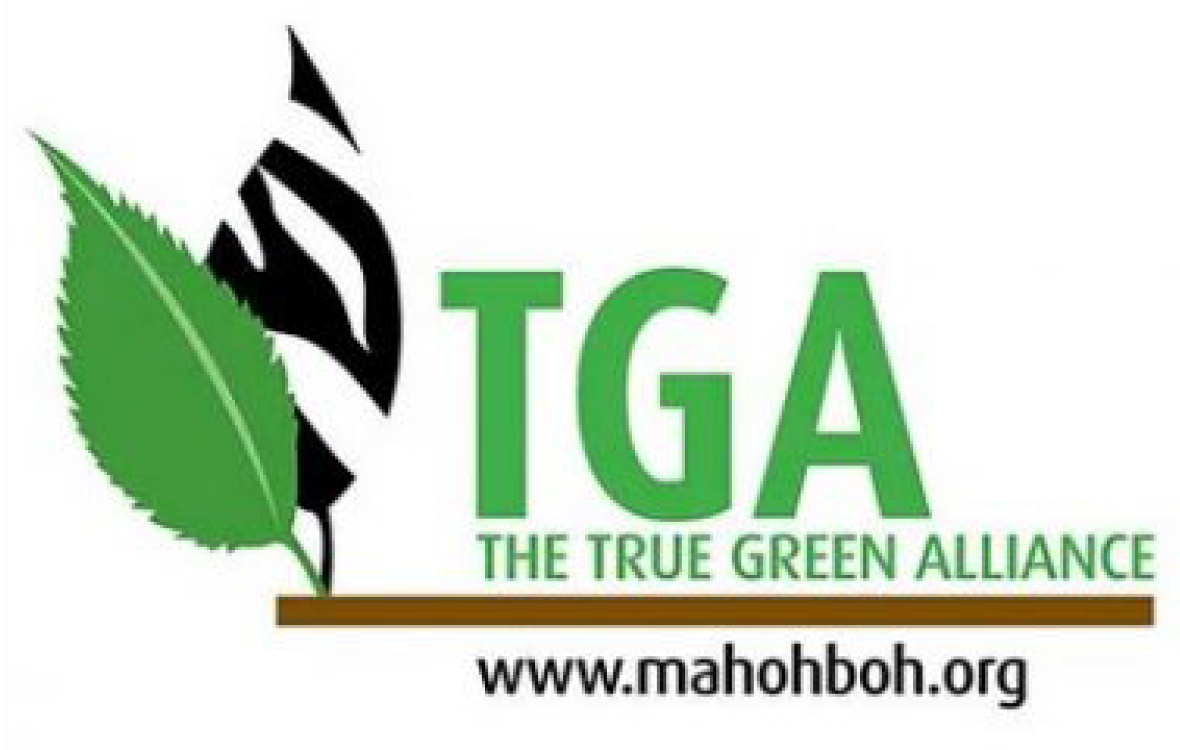They promote the NON-use-of-wildlife (no hunting and no harvesting) and ignore conservation (the principles and practices of science-based wildlife management). Today the animal rightist NGOs fund the Kenyan Wildlife Service (KWS) in its entirety, which funding (they say) will continue as long as the government does not try to re-introduce hunting, or the sustainable-use of wildlife (in any form) into the country’s wildlife policies.
So, what has happened, since independence, to Kenya’s wildlife?
In 1970 it was officially claimed that Kenya was home to 275 000 elephants. By 1977 that massive number had been halved. By 1989 their numbers had been reduced to 20 000. Commercial poachers, it is claimed (by the ex-patriot animal rightist NGOs), had killed more than 90 percent of Kenya’s elephants in less than 20 years. This level of elephant poaching was unprecedented anywhere in Africa. What a scape-goat those so-called (but unidentified) commercial poachers proved to be!
The accredited animal rightist NGOs at CITES (from 1989 onwards), unaware of the facts surrounding Africa’s elephant numbers but by generating rumours and exaggerating what they were guessing, claimed that the continent as a whole had had 1.2 million elephants in 1970 and that this number had declined to less than 500 000 (their figures) by 1990.
They attributed the existence of a legal loophole in the articles of CITES, which was the fact that CITES approved the international trade in ivory at that time, as the reason for the poaching of elephants in the 1970s and 1980s. They further stated that the poaching was carried out, in collaboration with a huge Far Eastern (Chinese) poaching mafia by the greedy rural people of Africa.
The NGOs were so charismatic in their false assertions during the CITES debates in 1989 and so forceful in their demands, that they succeeded in persuading the official CITES delegates to vote in favour of imposing a universal international ban on the trade in ivory. They also had the elephant successfully placed on the CITES Appendix I list, which effectively declared the species to be endangered.
…NOW…WHAT ARE THE FACTS?
Here is an abridged version of a very fine article written on this subject. It was posted on the internet by MaVulture on 12th March 2012 and it is entitled: “Mother of nation who led plunder of beloved motherland”. It tells this story very clearly and it corroborates several verbal and written reports that I have, myself, received from numerous Kenyans.
Mama Ngina, as many Kenyans affectionately called their First Lady in the 1960s and 1970s, wife of President Jomo Kenyatta, has a public image that radiates calm and dignity.
When visiting her husband’s mausoleum every August (Jomo Kenyatta died on 12th August 1978) Ngina is always resplendent in colourful African fabrics and matching headgear. And she emanates the image of loss and courage, the epitome of pain and sacrifice.
This mystique, however, is merely a façade. The real Mama Ngina is a powerful business operator whose aggressive pursuit of money at the height of Kenyatta’s power saw her rise to become the richest woman in Africa.
That should not be surprising, however, for wealth runs in the family, with her son, Uhuru Kenyatta, ranked by Forbes Africa magazine as the richest man in Kenya, and the 23rd wealthiest man on the continent, on account of the enormous land holdings that he stands to inherit.
Mama Ngina’s claim to fame in the 1970s, however, is unique. Multiple but reliable media outlets allege that her enormous wealth stemmed from elephant poaching and ivory smuggling that almost wiped out the species (the elephant) from the landscapes of Kenya.
Charles Hornby, in his book ‘Kenya: A history since independence (1963 – 2011)’, explains how well-connected cartels smuggled several kinds of game trophy contraband to Asian countries, to mint millions of US dollars. The ivory and skins recovered from the butchered animals were smuggled into Hong Kong, Japan and China where there was an insatiable demand. He records at least 15 000 elephants being killed each year (during the 1970s and 1980s) whilst 10 000 black rhinos were shot between 1973 and 1979.
Senior government officials, particularly those who were members of the Kenyatta family, were involved in the poaching activities and government vehicles were used to ferry the game trophies from the country’s wildlife sanctuaries to coastal depots from where they were shipped directly to Far Eastern markets. Legal procedures were ignored and the goods were dispatched without any legal export permits.
Mama Ngina was cited as being the chief butcher although she did not personally pull the triggers or unleash poisoned arrows on elephants. She was, nevertheless, the matron who protected, controlled and paid those who did.
Mama Ngina heard, but ignored, the grumblings in parliament about her elephant poaching escapades. And she, together with Kenyatta’s daughter by a previous marriage, Margaret Wambi, got away scot-free with their plunder of Kenya’s wildlife. They proved to be a law unto themselves.
Margarent Wambi served as Nairobbi’s first female black mayor. The entire Kenyatta family, it seems, was implicated in the poaching of elephants, rhinos and other wildlife, and in the illegal export of their ivory, horns and skins.
It was not only elephant that were killed. Five thousand zebra were shot within 800 kilometers of Nairobi in a six-months-long shooting spree in 1975.
Colobus Monkeys were shot for their beautiful black and white skins and long-haired mantles and two village hunters were arrested and put into gaol for being in possession of 26 000 of these monkey skins.
The arrested hunters were released two days later, with their skins, when the president’s office provided the police with valid possession permits.
Ironically, much of the killing was executed by Ministry of Tourism and Wildlife Service personnel. And both politicians and civil servants were caught buying ivory cheaply from the Game Department headquarters and then exporting the tusks for which they received a much higher price.
Mamma Ngina was incensed when she found out that the Guild of Professional Hunting Guides was counting the carcasses of the elephants and rhinos killed by her village hunters, all over the wild bush country of Kenya. The numbers rose into the tens of thousands! And, in an effort to stop the wanton slaughter, the PGHs were reporting all the facts to the international press agencies based in Nairobi. Furthermore, they also told the press exactly who was responsible. Thus did Ngina’s elephant poaching exploits get into the international discussion.
Due to pressure from Ngina, and pressure from the animal rights NGOs resident in Nairobi in 1973, Chief Game Warden John Mutinda outlawed the hunting of elephants in Kenya and he withdraw all valid elephant hunting licenses. This stopped the legal hunting of elephants, but it did not stop the PHG’s from exposing the continued slaughter of elephants to the media.
This happened, you see, because although the PHG’s were no longer allowed to hunt elephants, they continued to offer the hunting of other game species on their big game hunting safaris. The fact that they were still legally running these ordinary-game hunting safaris, kept the PHGs in the bush. So, they were still exposed in the First Lady’s elephant and rhino poaching slaughter. And they continued to inform the press.
In 1977, all legal hunting was permanently banned at the sole instigation of Ngina Kenyatta. This was the only way left to her to eliminate her opposition. This ban closed down the famous fraternity of White Professional Hunters in Kenya, altogether. The PHGs, and the whole professional hunting business, then upped-sticks and moved to Botswana. And there they very successfully opened up a new professional hunting operation without political opposition.
No wildlife management reason was ever given for the hunting closure in Kenya!
This is the real story surrounding the fact that all hunting in Kenya was stopped in 1977. To this day, 45 years after the hunting closure took effect, Kenyans are still trying to tell the world that hunting was closed down in their country, in 1977, for purely altruistic reasons. That is bunkum. Read between the lines and tell me that you don’t believe what I have just told you!
Woven within the fabric of this story are some extra-long tales of woe and scandal which we have not pursued (because they don’t really add to the basic story here being told).
It has been calculated that Mama Ngina and her close Kenyatta relatives, were earning US$10 million a year from their wildlife poaching activities throughout the 1970s and 1980s. In 2013, Ngina’s personal wealth was reported by Ventures Africa to be in excess of US $1 billion.
At the time of writing, I believe Ngina Kenyatta is still alive! So I won’t skin her cat any further!
When Ngina and the First Family could no longer cope with the national and international condemnation, they issued a five-page statement through the Kenya News Agency dismissing the poaching allegations. The lengthy report judged as false any and all allegations that Mama Ngina was involved in the poaching. It called the allegations blackmail and scandalous. Further, it considered the figures of dwindled elephant stocks to be guesswork.
Organized elephant poaching in Kenya did not stop when Jomo Kenyatta died. It continued, under Ngina’s continued control, well into the 1980s. By the time of the CITES meeting in 1989 (Cop7), Kenya’s national elephant herd was reported to have been reduced to 20 000.
Ron Thomson
CEO True Green Alliance






